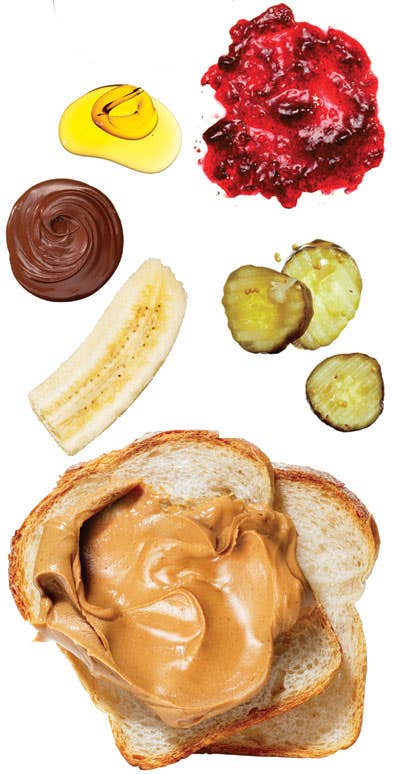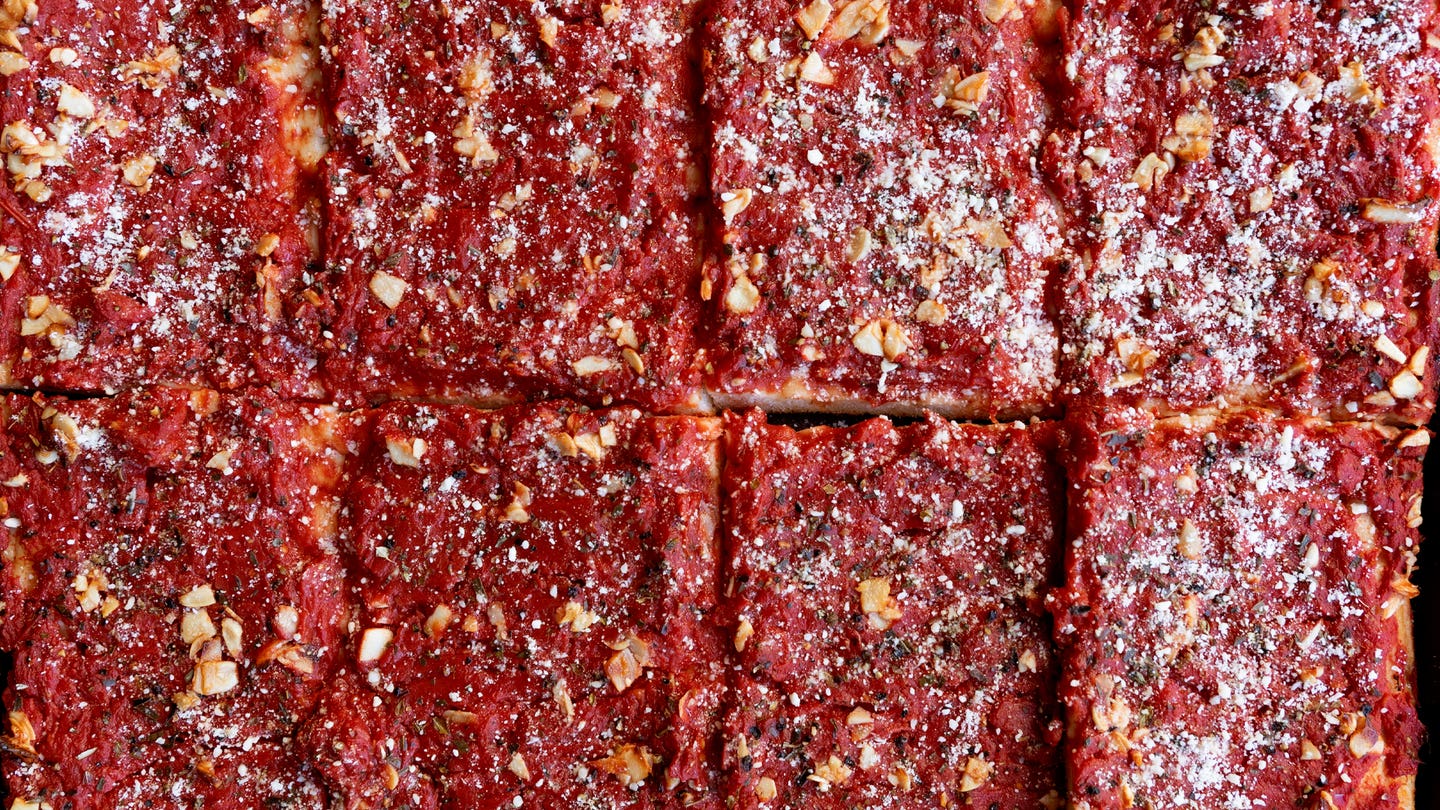
Nuts About It: The Enduring Appeal of Peanut Butter Sandwiches
It's the summer after third grade, and my best friend, Becky Roth, is making me a peanut butter and jelly sandwich. I'm concerned about a couple of things. First, she's using Skippy, which doesn't taste at all right—which is to say, it doesn't taste like Jif, the kind we use at my house. At least our families agree on the matter of creamy (insipid) vs. crunchy (a mark of character). And I'm quite sure the toaster oven should have no part in this process—right up until Becky presents me with the sandwich itself. The molten peanut butter is like hot fudge; the blackberry jam's a thick syrup. They swirl together, salty and sweet, and splurge out the sides of the toasted bread. It's glorious.
Becky and I would go on to discover that the toaster oven approach works equally well with peanut butter and honey. Our experiments extended to peanut butter and banana, peanut butter and raisin, peanut butter and marshmallow fluff, and, after reading about it in the Mrs. Piggle-Wiggle books, peanut butter and dill pickle. After all, peanut butter sandwiches are the quintessential kid food, right?
It wasn't always that way. Peanuts have been ground into paste for hundreds of years, but it wasn't until the end of the 19th century that John Harvey Kellogg, the breakfast cereal entrepreneur, dubbed the product "peanut butter" and marketed it as a health food. In the years leading up to the First World War, a peanut butter sandwich was a chic and thoroughly modern thing to eat.
Beginning in the 1920s, the peanut butter business consolidated into a few megabrands, and peanut butter became an inexpensive food marketed to the masses. The introduction of presliced sandwich bread, in 1928, meant that parents could assemble a lunch in seconds—or allow children to do it themselves—and, thanks to peanut butter's health food status, they could feel virtuous about it. After World War II, when the U.S. sent aid to Europe in the form of peanut butter, the ingredient came to be seen as a symbol of America itself.
By the 1960s, eating "natural" peanut butter—free of the hydrogenated oil that kept the industrial kind from separating—was a sign of counterculture sympathies. Now, with the incidence of nut allergies at an all-time high, in many schools, a child who packs a peanut butter sandwich must eat it at a specially designated table—perhaps all alone, like Charlie Brown, who once mused, "Some psychiatrists say that people who eat peanut butter sandwiches are lonely. I guess they're right."
I think I always knew that a peanut butter sandwich is never just a peanut butter sandwich. Even today, when I come across something like peanut butter and mayonnaise, a classic sandwich dating back at least to the 1890s, it triggers a reaction close to fight-or-flight. These proclivities are primal. Show me your peanut butter sandwich, and I'll tell you who you are.
Keep Reading
Continue to Next Story










